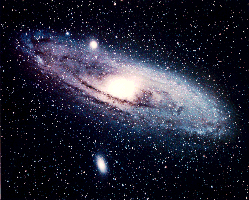Geneva, 27 June 2000. On Monday 26 June Luciano Maiani, Director-General of CERN1, the European Organisation for Nuclear Research, opened the "Supersymmetry 2000" conference which is taking place at CERN in Geneva this week. Many of the world's top physicists are gathering to present their work and discuss possible signatures of new physics beyond the Standard Model of particle physics, such as novel particles and large extra dimensions of space, and the problem of energy in the vacuum, first raised by Einstein.
Geneva, 27 June 2000. On Monday 26 June Luciano Maiani, Director-General of CERN1, the European Organisation for Nuclear Research, opened the "Supersymmetry 2000" conference which is taking place at CERN in Geneva this week. Many of the world's top physicists are gathering to present their work and discuss possible signatures of new physics beyond the Standard Model of particle physics, such as novel particles and large extra dimensions of space, and the problem of energy in the vacuum, first raised by Einstein.
The focus of the "Supersymmetry 2000" (or SUSY 2K) conference, hosted by the CERN Theoretical Physics Division, is on supersymmetry Ð an extraordinary symmetry that is conjectured to unify and explain many of the properties of the fundamental forces and particles that make up our world. One prediction of supersymmetry is that for every observed particle (such as electrons or quarks) there will be a partner particle with different properties. The search for them is one of the top priorities at present experiments at CERN's LEP accelerator as well as future experiments at the LHC accelerator now under construction. A discovery of so-called "superpartners" to the usual particles would necessitate a profound change in our view of the structure of spacetime, certainly the most significant since Einstein's theory of relativity.
This year, stimulated by a remarkable ferment of new theoretical ideas over the last two years, the conference has expanded into one of the most important events where results, ideas, and conjectures at the forefront of a broad range of modern high-energy theoretical physics and early cosmology will be discussed. There will be a record-breaking attendance of over 400 theorists and experimentalists from all over the world presenting almost 180 talks.
One area of great experimental excitement concerns the properties of the mysterious neutrinos. Experiments in the last two years have provided strong evidence that, contrary to the predictions of the Standard Model -- the theoretical description of the fundamental forces and particles that make up our universe -- at least some neutrinos can change their identity as they move. A representative of the Super-Kamiokande and K2K experiments based in Japan will present their latest results, which strikingly confirm these properties. They provide the first direct experimental evidence that the Standard Model is incomplete and must be at least partially modified, and are a milestone in our understanding of the world. These results also have bearing on the composition of the universe, since neutrinos could form one fraction of the "dark matter" that is known to pervade our universe. Another fraction may be provided by supersymmetric particles, and hints of their discovery will also be reviewed at SUSY 2K.
Our knowledge of the properties of the universe has been enormously enhanced by experiments observing the background of microwave radiation that pervades it, and new results from the BOOMERANG and MAXIMA collaborations will be presented at SUSY 2K. They add further weight to the case for the missing dark matter, as well as revealing some aspects of the earliest moments of the Big Bang.
In addition to supersymmetry, much of the conference will be devoted to remarkable related developments in theoretical physics over the last two years. These have radically changed our previous view of the universe as possessing just three spatial dimensions. One possibility that many speakers will be addressing is that our entire world could be a three-dimensional membrane embedded in a higher-dimensional space that might be very large. This possibility is being explored actively in experiments at CERN and elsewhere.
Another important issue is the question whether the vacuum filling our universe might contain hidden energy, a possibility first raised by Einstein, which has gained support from recent observations of the universe. Ideas based on supersymmetry and extra dimensions offer new prospects for solving this cosmological constant problem, which has defied more than 50 years of intense effort by the world's best theoretical physicists. String theory, which embodies these ideas, may also be able to answer such basic questions as why our universe is so large and long-lived and, even more fundamentally, why our observed world has three spatial and one time directions, what happened at the beginning of the universe, and what its ultimate fate will be.
1. CERN, the European Organization for Nuclear Research, has its headquarters in Geneva. At present, its Member States are Austria, Belgium, Bulgaria, the Czech Republic, Denmark, Finland, France, Germany, Greece, Hungary, Italy, Netherlands, Norway, Poland, Portugal, Slovakia, Spain, Sweden, Switzerland and the United Kingdom. Israel, Japan, the Russian Federation, the United States of America, Turkey, the European Commission and Unesco have observer status.
